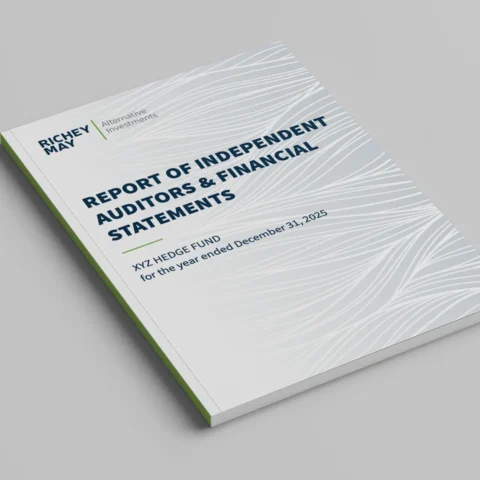When a fire department needs new hoses, they have a choice. They could save money with a $25 residential garden hose from the hardware store, or invest in a professional-grade fire hose that costs upwards of $150. Technically, both are hoses. Both move water. No one will know the difference sitting in the firehouse … until the alarm sounds and lives hang in the balance.
When that cheap hose bursts, tears or melts under pressure, the memory of the money saved will mock the conscience of the person who bought it.
The same dynamic plays out in cybersecurity, particularly as mortgage lenders face Fannie Mae’s new cybersecurity and penetration test requirements. The supplement mandates that companies conduct “an independent third-party penetration test that is conducted at least annually on systems or system components used to store, access, process or transmit Confidential Information.” With the deadline to comply approaching, many lenders are discovering that some offerings that call themselves “penetration tests” are not really penetration tests … certainly not by Fannie Mae’s standards.
The Penetration Testing Marketplace Reality
Send out requests for penetration testing services, and you’ll encounter dramatic pricing differences: from automated vulnerability scans marketed as “penetration testing” for a few hundred dollars to complete security assessments that range in the thousands to tens of thousands.
The difference in pricing reflects the fundamental differences in what’s included and what’s delivered. Many organizations think they’re getting a killer deal on professional-grade penetration testing when what they actually get is a vulnerability scan.
A vulnerability scan is an automated tool that identifies potential security weaknesses (like a smoke detector that alerts you to problems). A genuine penetration test involves skilled ethical hackers who actively attempt to exploit those vulnerabilities (like a fire inspector who slams doors and windows to see if they will fail under the harsh use of an actual emergency).
This distinction matters enormously for Fannie Mae cybersecurity compliance. The supplement specifically requires penetration testing, not only vulnerability scanning, though both should be part of a complete security program. More critically, Fannie Mae cybersecurity standards expect testing that actually validates your security posture, not just checks a compliance box.
What Fannie Mae Cybersecurity Requirements Actually Demand
Fannie Mae’s cybersecurity supplement is precise. The requirement calls for “an independent third-party penetration test” conducted annually (see page eleven). Here’s what this means for Fannie Mae cybersecurity compliance:
- Independent Third-Party: Outside validation from qualified professionals without internal politics, bias or budget influence
- Penetration Test: Active exploitation attempts by ethical hackers, different than automated vulnerability scanning
- Annual Frequency: Minimum requirement, though experts may recommend more frequent testing based on your program’s unique needs
- Complete Scope: Must cover all systems handling Confidential Information or connecting to Fannie Mae systems
The Hidden Costs of Cheap Penetration Testing
Organizations seduced by the allure of low-cost penetration testing experience day-after regret when the realization of what they bought sinks in. Here are common problems with budget testing providers that fail to meet Fannie Mae cybersecurity standards:
One-Size-Fits-All Approach: Many cheap “penetration testing” services are primarily automated vulnerability scans with minimal human analysis. While automated tools play a role in testing, they can’t replicate the creativity and persistence of actual attackers. Real penetration testing requires experienced professionals who can think like attackers and test against contemporary threats.
Generic Reports: Budget providers often deliver generic reports that list technical vulnerabilities without explaining business impact or providing actionable remediation guidance. These reports might technically satisfy auditors but provide little value for improving security posture or meeting Fannie Mae cybersecurity requirements.
Limited Scope and Methods: Cheap penetration testing often means limited testing time and simplified methods. Providers might only test obvious targets or use outdated attack techniques, missing sophisticated threats and failing to meet complete Fannie Mae cybersecurity requirements.
No Retesting: Quality penetration testing includes retesting to validate that identified vulnerabilities have been properly remediated. Budget providers often skip this step, leaving you uncertain whether fixes actually solved the problems … a critical gap for ongoing Fannie Mae cybersecurity compliance.
Inadequate Documentation: Fannie Mae cybersecurity auditors expect detailed documentation of your penetration testing program. Budget providers often deliver basic documentation that doesn’t meet regulatory expectations.
Regulatory Penalties and Business Consequences: Beyond the immediate security risks, inadequate penetration testing can trigger severe consequences. The Fannie Mae cybersecurity supplement grants Fannie Mae authority to immediately terminate system access, suspend integration interfaces, or even terminate lender contracts for non-compliance. Companies that fail to meet cybersecurity standards may find themselves cut off from Fannie Mae systems without prior notice, effectively halting their ability to originate or service loans. Restoring access requires attestation from independent third parties that systems are secure, creating additional costs and delays. For mortgage lenders, losing Fannie Mae approval doesn’t just mean compliance fines: it means losing access to the secondary market that enables their core business operations.
How to Identify Quality Penetration Testing for Fannie Mae Cybersecurity Compliance
When evaluating penetration testing providers for Fannie Mae cybersecurity requirements, look for these key indicators:
Complete Methods: Quality providers use established frameworks like the Penetration Testing Execution Standard (PTES) that ensure all critical areas are covered. They should explain their approach to intelligence gathering, threat modeling, vulnerability analysis, and exploitation activities that align with Fannie Mae cybersecurity standards.
Look for penetration testing providers who ask detailed scoping questions:
- Number of live IPs externally and internally
- Cloud infrastructure components
- Web applications and user roles requiring testing
- Compliance requirements (PCI, SOX, Fannie Mae cybersecurity)
- Acceptable testing windows and business constraints
Professional penetration testing requires this environmental understanding to deliver meaningful results.
Experienced Team: Ask about certifications and experience of actual testers conducting your assessment. Look for penetration testing providers with certified ethical hackers who have relevant industry experience.
Industry Expertise: The mortgage industry has specific regulatory requirements and threat profiles. Penetration testing providers with financial services experience understand these nuances and can tailor testing to meet Fannie Mae cybersecurity standards.
Detailed Reporting: Quality penetration testing produces complete reports with executive summaries, detailed technical findings, clear risk ratings, and specific remediation guidance. Sample reports reveal whether providers deliver the analysis needed for Fannie Mae cybersecurity compliance.
Retesting and Validation: Ensure your penetration testing provider includes retesting to validate remediation efforts. This is essential for demonstrating to Fannie Mae cybersecurity auditors that you’ve addressed identified vulnerabilities.
Integration with Security Program: The best penetration testing providers understand that testing is one component of a complete cybersecurity program. They help you understand how findings relate to overall risk management and Fannie Mae cybersecurity compliance obligations.
The Business Case for Professional-Grade Penetration Testing
Organizations often focus on upfront cost differences without considering broader business implications. Quality penetration testing delivers value beyond Fannie Mae cybersecurity compliance:
- Meaningful Risk Reduction: Complete penetration testing identifies and helps address actual vulnerabilities before attackers exploit them
- Regulatory Confidence: Provides documentation needed to demonstrate meaningful compliance to Fannie Mae cybersecurity auditors
- Strategic Security Insights: Experienced testers provide insights for informed security investment and risk management decisions
- Competitive Advantage: Robust security programs enable pursuit of business opportunities that might be too risky for competitors
Quality cybersecurity often becomes a business enabler, not just a compliance cost.
Making the Right Choice Before Year-End
With the Fannie Mae cybersecurity compliance deadline approaching, mortgage lenders face pressure to quickly implement penetration testing programs. However, rushing into cheap testing can create more problems than it solves.
The best approach is to invest in quality penetration testing that improves your security posture while meeting Fannie Mae cybersecurity requirements:
Start Now: Quality penetration testing takes time to scope, conduct, and remediate. Starting now gives you time to create a plan and schedule your penetration test before the Fannie Mae cybersecurity compliance deadline of August 12, 2025.
Focus on Value: Evaluate penetration testing providers based on value delivered, not just price. Consider total cost of ownership, including business risk of inadequate testing.
Build Relationships: The best penetration testing providers become long-term partners who help you continuously improve security posture while maintaining Fannie Mae cybersecurity compliance.
Think Beyond Compliance: While meeting Fannie Mae cybersecurity requirements is essential, the goal should be meaningful security improvement that protects your organization and enables business growth.
The Stakes Are Higher Than Ever
The mortgage industry faces increasingly sophisticated cyberattacks while regulatory expectations continue to evolve. In this environment, the choice between cheap and quality penetration testing isn’t just about Fannie Mae cybersecurity compliance: it’s about the fundamental security of your organization and customer trust.
The few thousand dollars saved by choosing budget penetration testing becomes a symbol of short-sightedness if that testing fails to identify vulnerabilities that attackers eventually exploit. When evaluating penetration testing providers, remember that Fannie Mae cybersecurity requirements represent the minimum standard, not the goal. If you need help navigating Fannie Mae cybersecurity requirements or want to ensure your penetration testing program delivers real security value, reach out to our team of mortgage cybersecurity experts today at info@richeymay.com.





